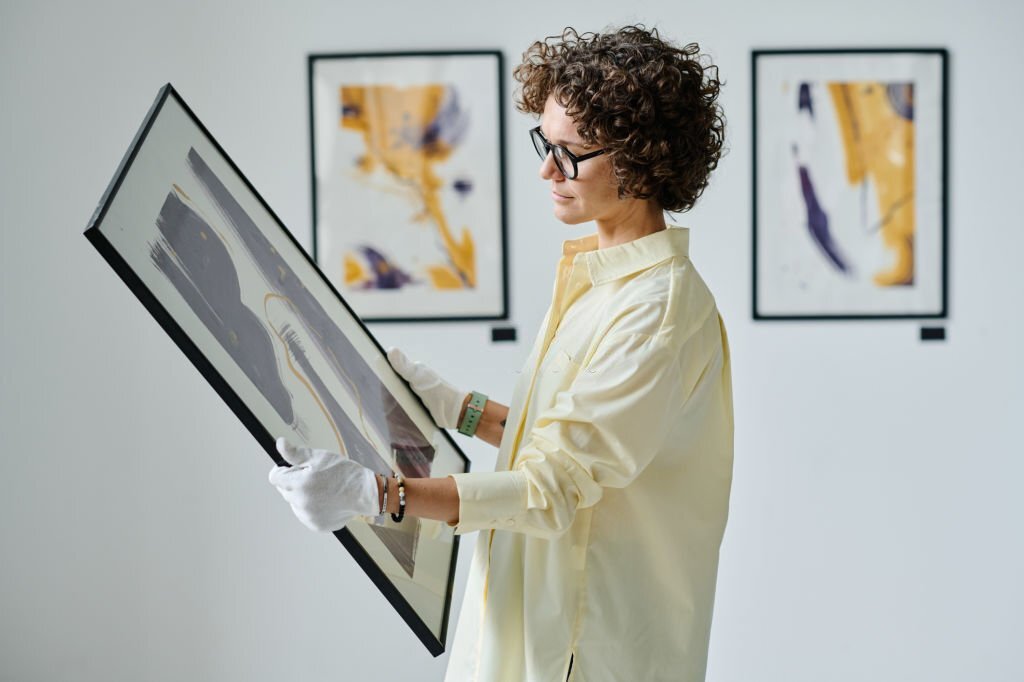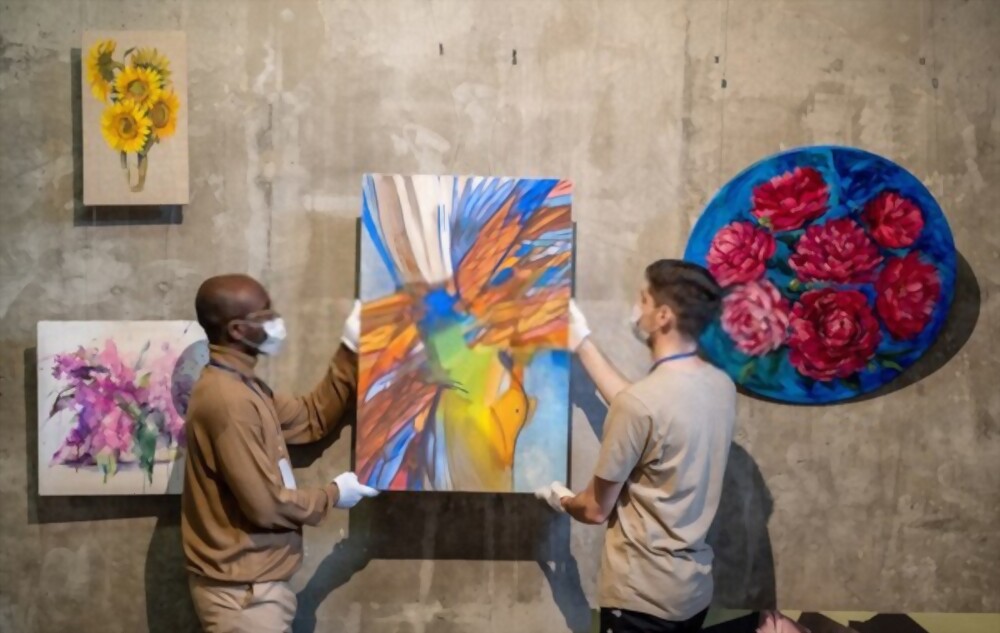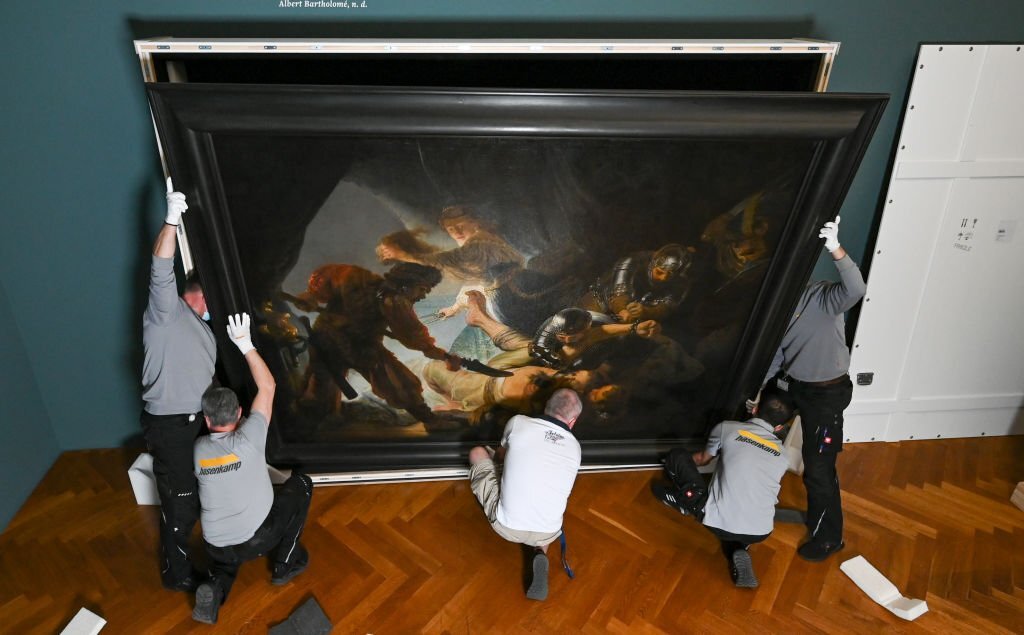Let’s talk about How is Artwork Preserved and Protected? Artwork preservation refers to the practice of safeguarding and maintaining art pieces to prevent damage, degradation, or loss. It involves employing a combination of techniques, technologies, and expertise to ensure the longevity and accessibility of artworks.
What is Artwork Preservation?
Artwork preservation encompasses a range of activities aimed at preventing, mitigating, and documenting damage to artworks. It involves understanding the materials and techniques used in creating art, assessing their condition, and implementing strategies to slow down deterioration.
Why is Artwork Preservation Important?

Artwork preservation is essential for several reasons. Firstly, it allows us to retain our cultural heritage and artistic accomplishments. In addition, artworks offer insights into different periods, cultures, and artistic movements, contributing to our collective knowledge and understanding of history. Preserving artwork ensures its availability for research, education, and public appreciation.
Moreover, artwork often holds significant monetary value. By preserving it, we safeguard the investments made by collectors, museums, and institutions. Artwork can also serve as an economic asset, attracting tourism and generating revenue for cultural organizations.
Techniques for Artwork Preservation: How is Artwork Preserved and Protected?
Preserving artwork involves a combination of techniques tailored to the specific needs of each piece. Here are three fundamental approaches:
Handling and Storage
Proper handling and storage are crucial to artwork preservation. Art pieces should be handled with care to prevent physical damage, such as tears, abrasions, or impacts. Utilizing appropriate archival materials, such as acid-free folders, boxes, and display cases, ensures protection from environmental factors and contaminants.

Environmental Controls
Maintaining stable environmental conditions is vital for artwork preservation. Controlling temperature, humidity, light exposure, and air quality helps mitigate the risks of deterioration. Museums and galleries often employ advanced climate control systems to create ideal preservation environments.
Conservation Treatments
Conservation treatments are employed when artworks require specialized care. These treatments can include cleaning, stabilizing fragile materials, repairing damages, and mitigating risks associated with aging and deterioration. Moreover, conservation professionals assess each artwork individually to determine the most appropriate treatment methods.
Challenges in Artwork Preservation
Preserving artwork poses several challenges, requiring ongoing research, expertise, and resources. Some key challenges include:
Aging and Deterioration
Artwork is subject to natural aging processes and inherent material deterioration. Factors such as exposure to light, fluctuations in temperature and humidity, pests, pollutants, and improper storage conditions can accelerate degradation. Preservation efforts aim to slow down these artwork aging processes and prolong the lifespan of artworks.
Environmental Factors
External factors, including natural disasters, fire, theft, and vandalism, pose significant risks to artwork. Implementing security measures, disaster preparedness plans, and insurance coverage helps mitigate these risks and protect valuable art collections.

Restoration and Conservation Ethics
Balancing restoration and conservation ethics is another challenge in artwork preservation. While restoring damaged artworks can enhance their aesthetic appeal, ethical considerations must be taken into account. Restoration should respect the artist’s original intent and historical context while preserving the integrity and authenticity of the piece.
Preservation Methods for Different Types of Artwork
Different types of artwork require specialized preservation techniques. Here are some methods for preserving various forms of art:
Paintings and Drawings
Paintings and drawings are often delicate and sensitive to environmental conditions. Preservation methods for these artworks involve appropriate framing, controlled lighting, and regular inspections to detect signs of deterioration. Protective varnishes and glass coatings can also be applied to safeguard the surfaces.
Sculptures and Installations
Preserving sculptures and installations involves careful handling, regular cleaning, and maintenance. Conservation experts may use specialized tools and materials to repair damages, stabilize structures, and prevent further deterioration. Outdoor sculptures may require additional protection against weathering and corrosion.

Photographs and Prints
Photographs and prints are susceptible to light damage, fading, and chemical degradation. Preservation methods for these artworks include archival framing, controlled display conditions, and digitization for long-term accessibility. Acid-free storage materials and handling practices are also employed to prevent physical damage.
Technology and Innovation in Artwork Preservation
Technology plays a crucial role in artwork preservation, offering innovative solutions for documentation, analysis, and restoration. Here are two notable areas of technological advancements:
Digital Preservation
Digital preservation allows for the long-term storage and accessibility of digital artworks, including digital paintings, installations, and multimedia creations. Plus, digital archives and platforms enable the preservation of digital art’s unique characteristics, ensuring its future appreciation and study.
Non-invasive Analysis Techniques
Non-invasive analysis techniques, such as spectroscopy and imaging, provide valuable insights into artwork composition, degradation patterns, and authentication. These techniques help conservators make informed decisions about treatment and preservation strategies without causing harm to the artwork.
Collaboration in Artwork Preservation
Collaboration among various stakeholders is vital for effective artwork preservation. Museums, galleries, conservation organizations, artists, collectors, and researchers work together to share knowledge, resources, and best practices. Collaborative efforts facilitate the development of comprehensive preservation strategies and foster a collective commitment to safeguarding our artistic heritage.

Museums and Galleries
Museums and galleries play a central role in artwork preservation. They establish conservation departments, conduct research, and implement preservation standards. These institutions also educate the public about the importance of preservation and provide access to preserved artworks through exhibitions and digital platforms.
Conservation Organizations
Conservation organizations specialize in the preservation and restoration of artworks. They offer expertise, training programs, and resources for conservation professionals. Conservation organizations also promote research and advocacy for ethical preservation practices.
Conclusion
Preserving and protecting artwork is crucial to ensure its longevity, cultural significance, and economic value. By employing various techniques, addressing challenges, utilizing innovative technologies, and fostering collaboration, we can safeguard artworks for future generations to appreciate and study.



